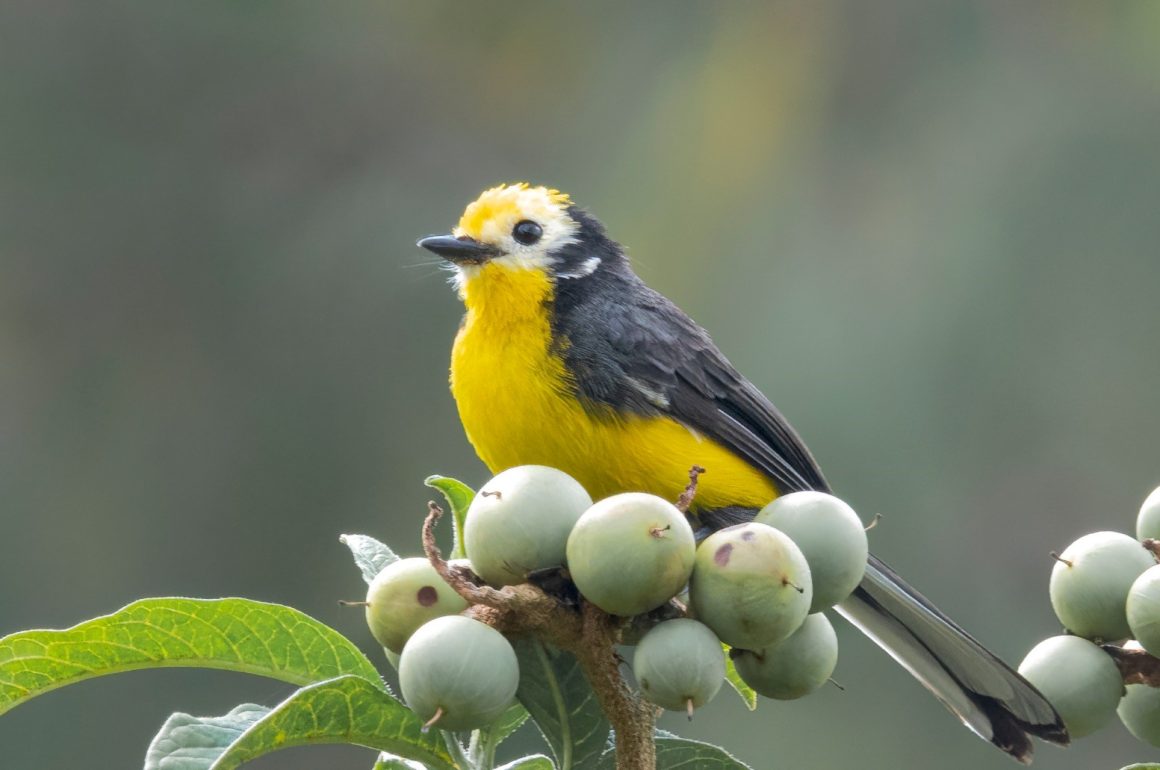
We have all done it. It was 4:30 AM Bogotá time and I jumped in the taxi, joining a young couple already in the car. Starting a conversation in my poor Spanish, chit-chatting about the weather and such, it took me a few minutes to realise these were not birders… Yes, the taxi had arrived at exactly the time my guide had told me there’d be a car and no, they hadn’t objected to me jumping into the car. Would you object to a giant in camouflage clothing? In Colombia, where camouflage-clad people have been terrorising the local population for half a century? Apologising profusely and hoping this would make them a great story one day, I left the taxi and ran back to the hotel just in time to meet my first Oswaldo.
We had a very specific target bird for today: Bogotá Rail, for which we would have to travel to a remote swamp in the interior of Cundinamarca province. Here, a long lost tribe would sacrifice a chicken, smoke a lot of hallucinogens and tattoo the rail’s image on some soft part of my anatomy. Or we could drive to the neighbourhood on the El Dorado international airport’s edge: Parque La Florida. The barrio made up for the lack of indigenous customs and other adventurous activities by having a slightly menacing look about it. A car wreck and not a single house in a finished state plus a few mangy street dogs. The park wasn’t open yet, so we crawled through a hole in the fence.
Not surprisingly considering the urban environment, we saw plenty Rufous-collared Sparrow, Great Thrush, House Wren and Tropical Kingbird. The ponds and ditches were good for waders (Greater Yellowlegs, Lesser Yellowlegs, Solitary Sandpiper, Spotted Sandpiper and Southern Lapwing) and assorted waterfowl (Purple Gallinule, American Coot, American Moorhen, Spot-flanked Gallinule, Pied-billed Grebe, Andean Duck, Lesser Scaup, Andean Teal, Blue-winged Teal and Black-bellied Whistling-Duck). In the bushes near the fence we also spotted Sparkling Violetear, Small-billed Elaenia, White-throated Tyrannulet and Rufous-browed Conebill. However, for first prize we had to wait patiently at a very unpromising looking lump of green stuff. And waiting we did… until finally…
… there it was, Bogotá Rail: so close I could have taken pictures with my phone. And then a second bird appeared, a third and my excitement got the better of me. Drinking in the image of this super-rarity cavorting with the whole family in the mossy undergrowth I forgot about the picture. Fortunately, others have kept their calm and taken the shot.
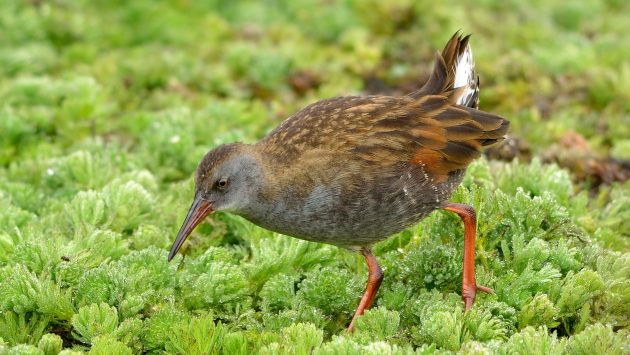
It was still very early in the day, so we drove further southwest to Parque Natural Chicaque. I can highly recommend this park for a first-timer. The mountain is steep but there’s a shuttle service up. You leisurely walk down while birding. Now, grab your Colombia field guide from the book shelf and check what we saw in just a few hours on one mountain: Beryl-spangled Tanager, Blue-and-black Tanager, Blue-capped Tanager, Superciliaried Hemispingus, Black-eared Hemispingus, Moustached Brushfinch, Grey-browed Brushfinch, Andean Solitaire, Grey-breasted Wood-Wren, Whiskered Wren, Mountain Wren, Green-and-black Fruiteater, Montane Foliage-gleaner, Montane Woodcreeper, Blackish Tapaculo, Chestnut-crowned Antpitta, and Southern Emerald-Toucanet.
The hummingbirds we saw deserve even more attention, if only for the poetic names: Gorgeted Woodstar, White-booted Racket-tail, Buff-tailed Coronet, Golden-bellied Starfrontlet, Collared Inca, Lesser Violetear, Speckled Hummingbird (OK, that’s rather prosaic), and Tourmaline Sunangel (all is forgiven).
Colombia is very rich in bird life – the nation’s list is close to 2000 species. My list after many trips to Colombia measures only 110. How is this possible if you consider I saw 36 species in an hour in La Florida? My personal theory is that the biodiversity in Colombia is entirely the result of the geography. Every mountain has its own set of species and Colombia has a lot of mountains. Flowerpiecers, tanagers, brushfinch, hummingbird – the families are always the same set, but the species differ. Getting to see all 2000 Colombian species will require a lot of hiking up and down those mountains. Then again, I actually saw four species of flowerpiecer on a single mountain (Masked Flowerpiecer, Bluish Flowerpiecer, White-sided Flowerpiercer and Glossy Flowerpiercer), so my theory might just be nonsense. Not that I am objecting to having seen these beauties (just look at Felix Uribe’s picture of the Masked Flowerpiecer).
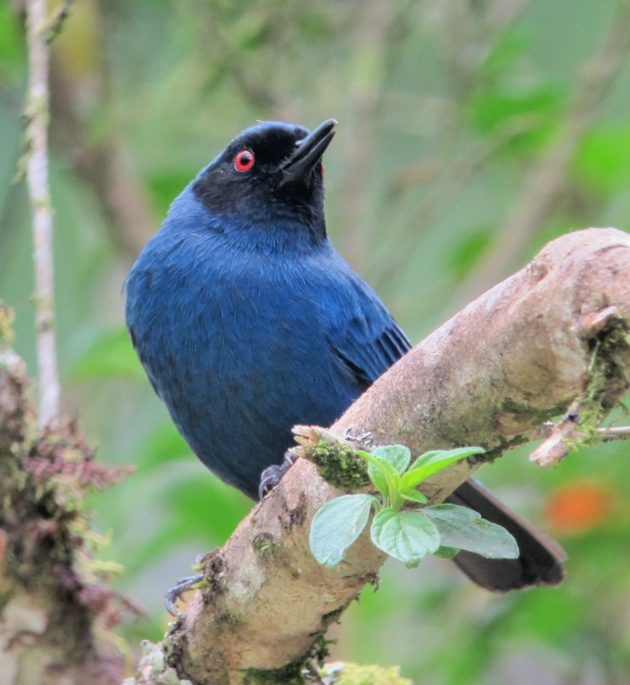
Still, with my second Oswaldo we would go up a different mountain: Sumapaz. Two of my colleagues joined me on the trip, José and Rodrigo. Neither had ever been birding nor did they understand the principle of the páramo, high-altitude treeless plains with lots of bitter cold rain. It’s a landscape that is both eerily beautiful and utterly miserable.
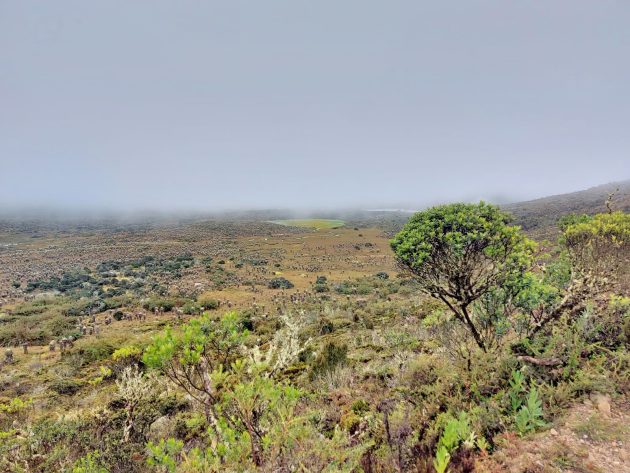
The higher up, the lower the species count but the more special the birds. That is a fact. The páramo doesn’t disappoint in that regard. We saw a few handfuls of birds, 18 in total, but just look at Oswaldo’s picture (he took all pictures, gracias) of our goal for the day: the Green-bearded Helmetcrest. That’s special.
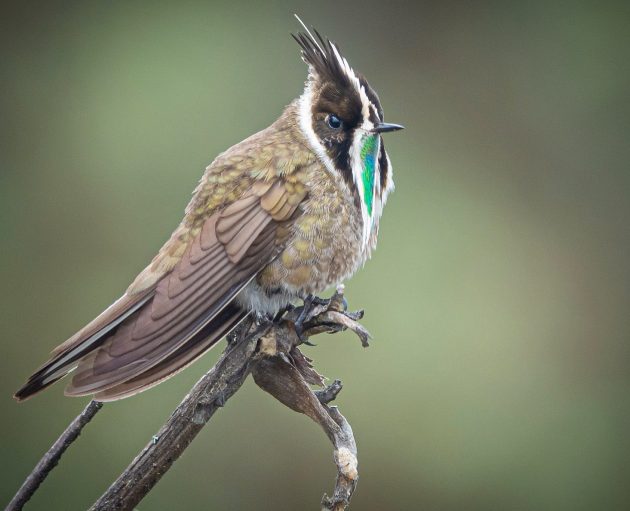
The barbudito – its local name – is a natural miracle. It’s a hummingbird, so it is a nectar feeder but that’s where the “normal” behaviour and physiology ends and the special starts.
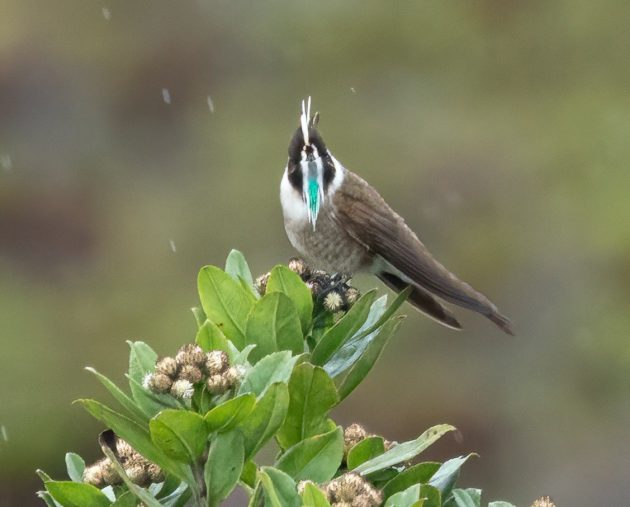
The páramo is a hostile place for tiny birds (6 grams) with high metabolisms, like hummers. So, the barbudito regulates its metabolism. This is the iceman of birds, where men suffer (see our selfie) this bird thrives.
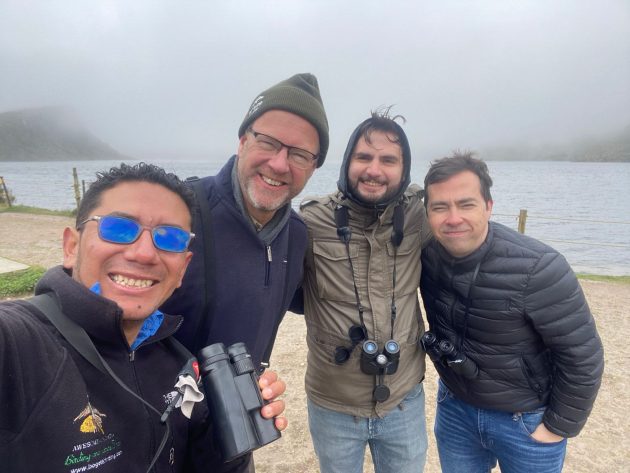
We explored further around Laguna Chisacá in the constant icy drizzle, mocked by the barbuditos. Our sightings included Plumbeous Sierra Finch, Pale-naped Brushfinch, Apolinar’s Wren, White-chinned Thistletail, Andean Tit-Spinetail, Bronze-tailed Thornbill and a nice Black-chested Buzzard-Eagle overhead.
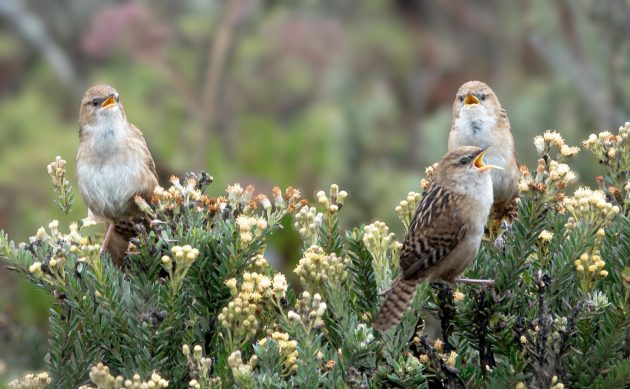
When my companions, exhausted, hypoxic and hypothermic, finally rose up in revolt we called it quits, but not after we saw the Boyaca Antpitta up close. Euphoria! Or was that feeling just hypothermia?
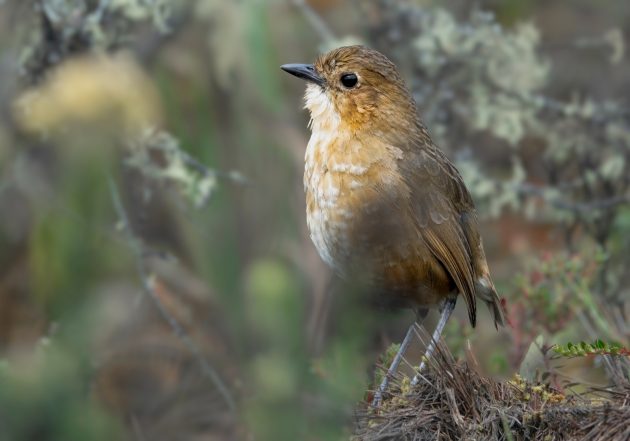













That rail looks just like a European water rail – they must be first cousins. I’d much rather see a green bearded helmetcrest, a bird I must admit I had never heard of. It’s an absolute stunner.
What an amzing array of specialised species, I had to keep going back to the image of the green bearded helmetcrest, stunning is right!
Looking at the entry on the Cornell Birds of the World website, Bogota Rail is closest to the Virginia Rail of North America and Austral Rail of southern South America. Apparently in 2016 it was assessed as having fewer than 6000 total world population and under pressure from habitat conversion owing to a very limited range